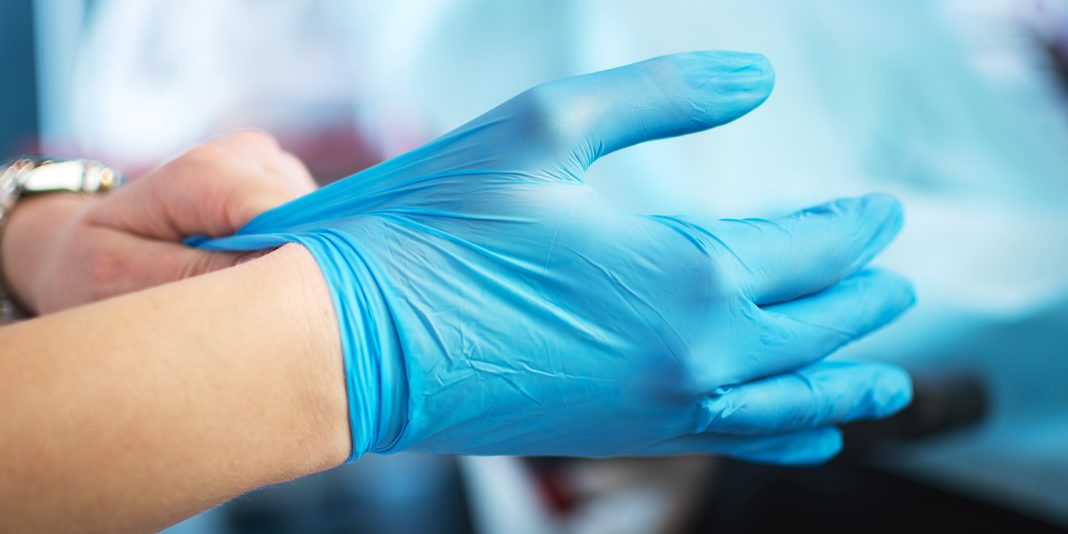Hand hygiene in New Zealand hospitals improved markedly in the past eight years – including when wearing gloves – but inappropriate glove use still remains an issue.
May 5 is World Hand Hygiene Day with the World Health Organization (WHO) choosing “It’s in your hands – prevent sepsis in health care” as this year’s theme.
Dr Sally Roberts, the clinical lead of the Health Quality & Safety Commission, says the number of children being admitted to New Zealand paediatric intensive care units with severe infections, including sepsis, has increased over the last 10 years. About four per cent of these children die. She said the international evidence was clear that improved hand hygiene practices help to reduce healthcare-associated infections.
“Hand hygiene is the simplest, most effective way to prevent the spread of healthcare-associated infections, so it’s important that everyone working in the health sector practises good hand hygiene. Clean hands save lives,” said Roberts.
In 2011 the Commission started working in partnership with Auckland District Health Board to improve hand hygiene amongst healthcare workers via the Hand Hygiene New Zealand (HHNZ) quality improvement programme.
As part of the HHNZ programme, regular spot audits are carried out across the 20 DHBs to monitor how many healthcare workers at each DHB are complying with the Five Moments of Hand Hygiene (see below) that include cleaning your hands (either with soap and water or hand-rub gel) before touching a patient and after touching a patient.
The latest hand hygiene compliance report – released in the lead-up to World Hand Hygiene Day –shows that in the audit round to March 31 2018 that 14 DHBs met the 80 per cent compliance target and national compliance now sits at 85.3 per cent.
Other positive trends included improvements in hand hygiene in areas where patients are at high risk of infection – including emergency departments.
Glove and Five Moments compliance
The report says it was good to see ‘continued, ongoing improvement” in better glove use and hand hygiene when gloves were put on. But inappropriate use of non-sterile gloves “remains a barrier to excellent hand hygiene practice”.
Back in 2014 hand cleaning moments were missed 33.3 per cent of the time when gloves were put on and this reduced to 22.6 per cent in 2015 and 13.2 per cent in the latest audit. But the latest audit shows there remains a large gap between good hand hygiene when gloves are put on and when gloves are taken off.
The latest glove statistics are:
- when gloves are taken OFF, the proportion of hand hygiene opportunities missed was 5.7 per cent compared with 5.5 per cent in the October 2017 audit
- when gloves are put ON, the proportion of hand hygiene opportunities missed was 13.2 per cent compared with 14.2 per cent in the October 2017 audit
- of all moments where glove use is recorded, healthcare workers failed to complete hand hygiene 12.1 per cent of the time, compared with 12.5 per cent in the October 2017 audit
- when gloves were worn continuously, hand hygiene opportunities were missed on every occasion.
Across the board all health professional groups have improved their hand hygiene compliance when working with patients – phlebotomists lead the rankings with 90 per cent compliance, followed by nurses and midwives at 88 per cent. Most health professionals’ and students’ compliance levels are now 80 per cent or above, but currently medical practitioners lag behind with 77.5% compliance and student doctors fell back from 80 per cent in October 2017 to 67.2 per cent in March 2018.
Sepsis trends
Roberts says the biggest increased in children admitted to paediatric ICU were babies aged less than 28 days because they were too young to be vaccinated against vaccine-preventable diseases.
“One reason for the increase in severe infections in older children is an increase in the number of invasive skin and soft tissue infections.”
She said advances in paediatric cancers and haematological malignancies were also leading to more severe immunosuppression and therefore increased infection risk, and there are also more children with co-morbidities.’
Dr Roberts said about 10 percent of adults admitted to intensive care units have severe sepsis.
“For the majority, sepsis developed before they were admitted to hospital. While the rate of death from severe sepsis or septic shock in adults has decreased over the last couple of decades, it’s still around 4.6 percent.”
Dr Roberts said with sepsis it was not uncommon for someone to seem completely well one day, and be very sick with sepsis, or even septic shock, 48 hours later. “The risk of death is significant if sepsis leads to septic shock, with approximately 40 percent of septic shock patients dying, even with treatment.”
One Waikato study found 10 percent of patients admitted to hospital because of infection had sepsis. Around 17 percent of these patients were admitted to intensive care units and nearly 34 percent of them died.
See more at: www.handhygiene.org.nz
The WHO Five Moments of Hand Hygiene
- Before touching a patient.
- Before a procedure.
- After a procedure or body fluid exposure risk.
- After touching a patient.
- After touching a patient’s surroundings.




















